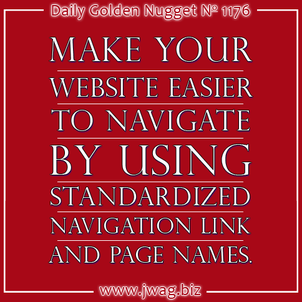
There are a few standard pages needed on all websites, like the Home, About Us, and Contact Us pages. Other pages become important depending on the business; a Directions/Locations page is important for a business with a physical location but it's probably useless if your business is 100% e-commerce.
Other common pages for retail jewelers include:
* List of Designers
* Services
* Staff
Once we get past the 7 pages I've already mentioned, the needs of the retail jeweler will influence the next set of pages that might be added to a website. Those pages might be:
* Online Catalog
* Specials
* Events
* Custom Design
* Affiliations (like JA, JVC, MJSA, etc.)
* Frequently Asked Questions (FAQ)
As of the time of this writing, this next set of pages are less common, although I hope they will one day be on all jewelry websites:
* Blog
* Community Involvement
* Newsletter
* Testimonials
Finally, there's this set of pages, referred to as overhead pages, which every website should have for necessary legal protection and customer assurance:
* Sitemap
* Privacy Policy
* Terms of Service
* Guarantee
* Shipping (if e-commerce)
* Return Policy (if e-commerce)
I've just given you a list of 23 pages in name only. I have a feeling that you immediately understood what you would find on every page without me having to explain it to you. That's because most, if not all, of these page names have become part of the standard website page layout for more than 20 years now. The "Designers" page and the "Custom Design" page are not unique to jewelry industry and are common enough for people to understand what they refer to.
Although every company will have different information on these 23 pages, the everyday average consumer expects to find these pages.
I'm not trying to give you a lesson in website structure today, but rather, I want to illustrate a point that users have expectations. Website conversion, which lead to higher sales, happens when your customer expectations are met, and when they are least confused.
Potential confusion occurs when you take one of the above page names and you call it something different. The Directions page is a good example of where potential confusion might occur. The word "directions" has a specific meaning, implying that the customer will find an app or written step-by-step driving directions to the store location.
Multi-location jewelry businesses will have a "Locations" page because that makes more sense for them. Seeing the "Locations" navigation link also tells the customer that you are a multi-store jeweler because that's what the word implies.
I've come across a few jewelers that stepped outside these expected conventions and used a navigation link of "Our Location." Perhaps it was aesthetically pleasing in their design, or perhaps they were just trying to appear more elegant than their competition, but whatever the reason, this unusual navigation link phrasing is unexpected.
Unexpected and unusual phrasing on a website causes confusion. Navigation confusion leads to a usability learning curve. Learning curves lead to higher bounce rates and lower conversions.
Some other examples include listing your designer names in the primary navigation across the top of the page. Does everyone automatically know who or what Tissot is? And who's this Phillip Gabriel, er, um, Phillip Gavriel guy listed in the top navigation link set?
Customers get confused without context, so don't step outside the norm with your main navigation links; stick to the standardized pages names I've given above. You can play with your sub link names however you feel is appropriate, but when a customer lands on your home page, they need to understand your website functionality quickly.
I'm all for creating fantastic functioning websites, but I also understand that usability drops very quickly when you try to design something unexpected.








